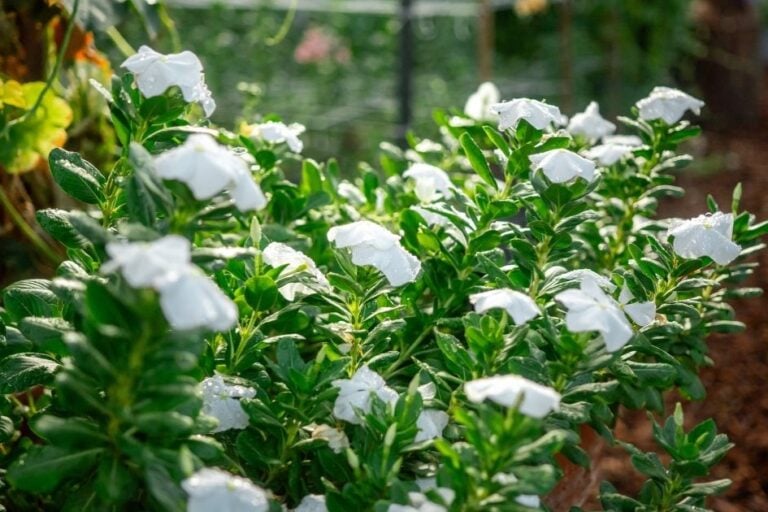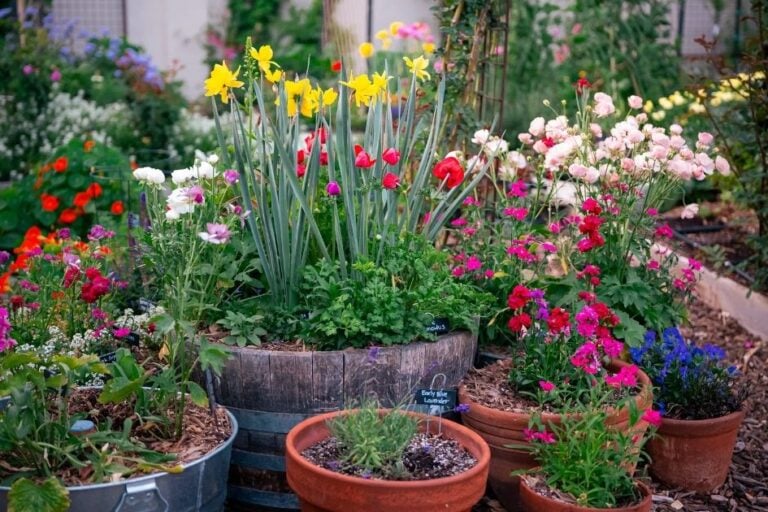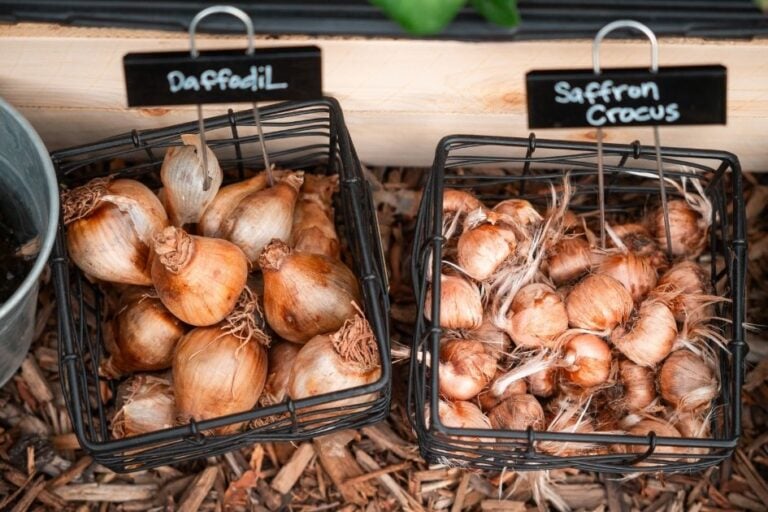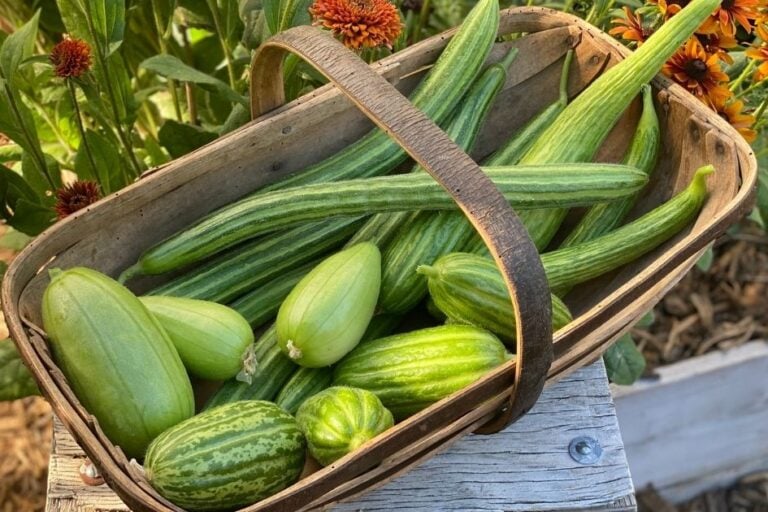Best Lavender Varieties For Hot Climates
Lavender’s fragrance is captivating, and many gardeners want to grow these beautiful blooms at home. However, not all lavender varieties thrive in every environment. Choosing the right type for your climate is crucial.
If you live in a desert region like Arizona, you’ll need a heat-tolerant lavender that can handle blazing sun. If your climate is more temperate, you’ll have a wider range of options. Either way, success starts with picking the right variety. Yes, you can grow lavender in a place as hot as Arizona—you just have to choose wisely. Let’s get to it!

Article Index:
- Lavender 101: The Main Types
- Matching Lavender to Your Zone
- Best Lavenders for Hot Climates
- What to Expect When Growing Lavender in Hot Climates
- Final Tips for Choosing Lavender
Lavender 101: The Main Types
English Lavender (Lavandula angustifolia)
- Best for: Cooler climates, USDA zones 5–8 (some varieties hardy to zone 4).
- Key Traits: Classic “true” lavender aroma, typically used in perfumes and culinary recipes. English lavender cultivars like ‘Hidcote’ and ‘Munstead’ are known for their deep purple flowers and strong fragrance.
- Climate Tips: Prefers moderate summers and tolerates chilly winters. In hot areas, it may need afternoon shade to avoid heat stress.

Spanish Lavender (Lavandula stoechas)
- Best for: Warm, dry climates (zones 7–9).
- Key Traits: Distinctive “rabbit ear” bracts atop the flower heads; blooms heavily in spring.
- Climate Tips: Thrives in Mediterranean-like conditions—mild winters, hot/dry summers. Generally less cold-hardy than English types.

French Lavender (Lavandula dentata)
- Best for: Mild winter regions (zones 8–9), including low desert areas if given some summer shade.
- Key Traits: Serrated (“toothed”) leaves, subtle but pleasant fragrance. Often blooms nearly year-round in frost-free regions.
- Climate Tips: Frost-sensitive below ~15 °F; does well with well-drained soil and moderate watering.

Lavandin Hybrids (Lavandula x intermedia)
- Best for: A wide range of zones (roughly 5–9).
- Key Traits: Hybrids of English and spike lavender; typically larger plants, very fragrant. Common examples include ‘Provence,’ ‘Grosso,’ and ‘Phenomenal.’
- Climate Tips: More heat-tolerant than pure English lavender and moderately cold-hardy. Ideal for regions with hot summers and moderate winters.

Matching Lavender to Your Zone
- Cool Climates (Zones 3–5)
Look for extra-hardy L. angustifolia varieties (e.g., ‘Munstead’ or ‘SuperBlue’). Provide winter mulch and ensure excellent drainage to prevent root rot in snow and freezing temps. - Moderate Climates (Zones 6–8)
You have the greatest choice—English, French, Spanish, and Lavandin all can thrive. Focus on your personal preference for flower style (e.g., “bunny ears” on Spanish) and scent (English tends to be sweet, and Lavandin often has a sharper fragrance). - Hot, Dry Climates (Zones 9–10)
Spanish lavender, French lavender, and Lavandin hybrids are your best bet—particularly if you have mild winters. These types tolerate intense sun, alkaline soils, and lower water conditions well. Provide afternoon shade if summer temps soar above 100 °F.
Best Lavenders for Hot Climates
Here are some of the best lavender varieties for hot climates, including desert regions like Arizona. These varieties can handle intense sun, high temperatures, and dry conditions while still producing beautiful, fragrant blooms.
Spanish Lavender (Lavandula stoechas)
- Why it thrives in heat: Native to the Mediterranean, this variety loves warm, dry conditions.
- What makes it unique: Recognizable by its “rabbit ear” bracts on top of deep purple flowers.
- Best for: Hot, arid regions with mild winters (Zones 7–9).
- Care tip: Tolerates full sun but benefits from occasional deadheading to extend blooming.

French Lavender (Lavandula dentata)
- Why it thrives in heat: Handles long, hot summers and mild winters better than English lavender.
- What makes it unique: Soft, gray-green leaves with a serrated edge and a slightly different scent.
- Best for: Zones 8–9, especially areas with alkaline soil and minimal frost. Excellent landscape plant. My top choice for lavender here in the low desert.
- Care tip: Blooms for extended periods in warm climates; prune lightly to maintain shape.

Lavandin ‘Provence’ (Lavandula x intermedia ‘Provence’)
- Why it thrives in heat: A hybrid of English and spike lavender, making it more tolerant of both heat and humidity.
- What makes it unique: Known for its tall flower spikes and strong, sweet fragrance.
- Best for: Zones 6–9; widely grown in commercial lavender farms.
- Care tip: Requires excellent drainage to prevent root rot in hot weather.

‘Goodwin Creek Gray’ (Lavandula x ginginsii)
- Why it thrives in heat: One of the most heat- and drought-tolerant lavenders.
- What makes it unique: Silvery-gray foliage with deep purple flower spikes.
- Best for: Hot climates, including desert areas, as long as the soil drains well.
- Care tip: Does well in containers but must have fast-draining soil.

Fern Leaf Lavender (Lavandula multifida)
- Why it thrives in heat: Tolerates dry conditions and blooms almost year-round in warm regions.
- What makes it unique: Feathery, fern-like foliage with a milder lavender scent.
- Best for: Hot, dry climates where traditional lavender struggles. Grows well in containers.
- Care tip: Blooms continuously with light trimming; a great choice for attracting pollinators and hummingbirds.

What to Expect When Growing Lavender in Hot Climates
Even heat-tolerant lavender varieties may struggle during peak summer temperatures. It’s normal for plants to look a little stressed, with some leaf curling or minor browning. However, once temperatures cool slightly, they will bounce back and continue blooming. Providing well-draining soil, occasional deep watering, and light afternoon shade in extreme heat can help keep your plants healthy.
Don’t forget to use the blooms! Learn more about edible flowers in this guide.
By choosing the right lavender variety for your hot climate, you’ll enjoy beautiful, fragrant blooms even in tough growing conditions. Lavender makes an excellent companion plant for your garden, learn more in this guide.

Final Tips for Choosing Lavender
- Check Local Nurseries – They often stock varieties proven to thrive in your area.
- Know Your Soil – Lavender needs excellent drainage, so be prepared to amend heavy or clay soils.
- Start Small – Grow a few different varieties to see which performs best before planting en masse.
- Experiment – Different areas of your yard may be better suited to growing lavender.

Don’t give up! The beautiful lavender blooms and the pollinators they attract year after year are worth the effort to find the right plant for the right spot in your yard.
Next step? Learn how to grow and care for lavender in desert conditions—read this article to learn how. Want to make the most of your lavender? Check out my full guide on harvesting, drying, and using lavender for all the details
Other Drought-Tolerant Plants You Might Like
Lavender thrives alongside other sun-loving, low-water plants. Check out our grow guides for:
Both share similar watering and soil conditions, so they’re great companions. You can also explore our guide to hot-climate perennial herbs.
Source: Mielke, Judy. Native Plants for Southwestern Landscapes. University of Texas Press, Austin, 1993.








Leave a comment on Best Lavender Varieties For Hot Climates